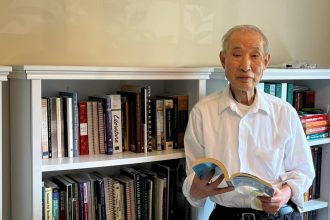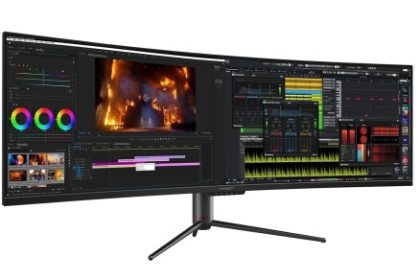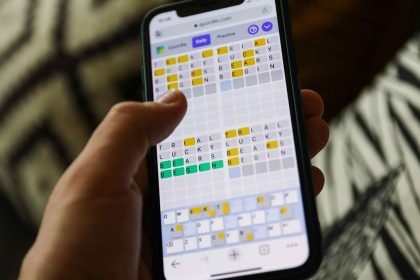The NASA/ESA/CSA James Webb Space Telescope has taken the most detailed image of planetary nebula NGC 1514 to date thanks to its unique mid-infrared observations. Webb shows its rings as “fuzzy,” intricate clumps of dust. It’s also easier to see holes punched through the bright pink central region.
NASA, ESA, CSA, STScI, Michael Ressler (NASA-JPL), Dave Jones (IAC)
This strange image may look like a cell dividing, or perhaps even a brain, but it’s neither of those things — it’s actually a space nebula, located 1,500 light-years away. Known affectionately as the Crystal Ball Nebula or more technically as NGC 1514, the striking structure of this object was created by the drama of a dying star.
The James Webb Space Telescope captured this image, showing the nebula in more detail than ever before. The object was previously observed using a NASA telescope called the Wide-field Infrared Survey Explorer (WISE) in 2010 by researcher Mike Ressler of NASA’s Jet Propulsion Laboratory, and he had the opportunity to go back and look at the object again using the cutting-edge powers of Webb’s MIRI instrument (Mid-Infrared Instrument). That showed up a set of fuzzy rings that were only visible in the infrared and some voids closer to the center of the object.
“Before Webb, we weren’t able to detect most of this material, let alone observe it so clearly,” said Ressler. “With MIRI’s data, we can now comprehensively examine the turbulent nature of this nebula.”
Two infrared views of NGC 1514. At left is an observation from NASA’s Wide-field Infrared Survey Explorer (WISE). At right is a more refined image from NASA’s James Webb Space Telescope. NASA, ESA, CSA, STScI, NASA-JPL, Caltech, UCLA, Michael Ressler (NASA-JPL), Dave Jones (IAC)
The nebula has this unusual shape because it was created by a pair of stars that lie at its heart. One of this pair came to the end of its fuel and puffed up, then threw off layers of dust and gas, leaving only a hot core called a white dwarf. This dwarf gives off weak but fast gusts of material called stellar winds, which shape the material around it. Researchers think that the material is being driven into an hourglass shape due to the presence of the other half of the pair, which has created the two bright rings.
“When this star was at its peak of losing material, the companion could have gotten very, very close,” said David Jones of the Institute of Astrophysics on the Canary Islands, who has also studied this system. “That interaction can lead to shapes that you wouldn’t expect. Instead of producing a sphere, this interaction might have formed these rings.”
With Webb’s observations, you can see that the rings aren’t solid. Rather, they are fuzzy and thicker in some places than others. “We think the rings are primarily made up of very small dust grains,” Ressler said. “When those grains are hit by ultraviolet light from the white dwarf star, they heat up ever so slightly, which we think makes them just warm enough to be detected by Webb in mid-infrared light.”
Please enable Javascript to view this content
Georgina has been the space writer at Digital Trends space writer for six years, covering human space exploration, planetary…
Four exoplanets discovered orbiting our cosmic neighbor, Barnard’s Star
These days, researchers commonly discover exoplanets, or planets outside our solar system. But sometimes there’s a special discovery, like an exoplanet right in our backyard — and that’s the case with a recent finding showing that our nearest stellar neighbor, Barnard’s Star, hosts up to four exoplanets.
It’s most common for scientists to discover planets which are large and which orbit close to their bright stars, because these are most visible using exoplanet detection methods. But Barnard’s Star is different — it’s a common type of cool, low-mass planet called a red dwarf. Red dwarfs are very numerous in our galaxy, so scientists are interested in the kinds of planets that they can host as they could be a good location to look for evidence of life.
Read more
James Webb to join observations of asteroid that could strike Earth in 2032
If you’ve been following the story of an asteroid that could hit Earth in 2032, there’s bad news and good news. The bad news is that the likelihood of the asteroid striking the Earth has now risen slightly, but the good news is that astronomers are using tools like the James Webb Space Telescope to track it in more detail.
The probability that Asteroid 2024 YR4 will impact Earth on December 22, 2032 has now risen to 2.3%, according to NASA. The asteroid is being observed by ground-bases telescopes that are part of the International Asteroid Warning Network, which will be following the it for as long as it continues to be visible — which should be through April this year. After that, it will be too faint to observe until 2028.
Read more
Gorgeous James Webb Space Telescope images land on new U.S. stamps
In a mark of its huge impact on the world of science and astronomy, NASA’s James Webb Space Telescope finds itself once again as the inspiration for a new set of stamps from the United States Postal Service (USPS).
Two new stamps issued this month feature iconic images captured by Webb, one of them showing a spiral galaxy called NGC 628. “Webb’s observations combine near- and mid-infrared light to reveal glowing gas and dust in stark shades of orange and red, as well as finer spiral shapes with the appearance of jagged edges,” NASA said of the image (below), adding that the galaxy is located 32 million light-years away in the Pisces constellation.
Read more











